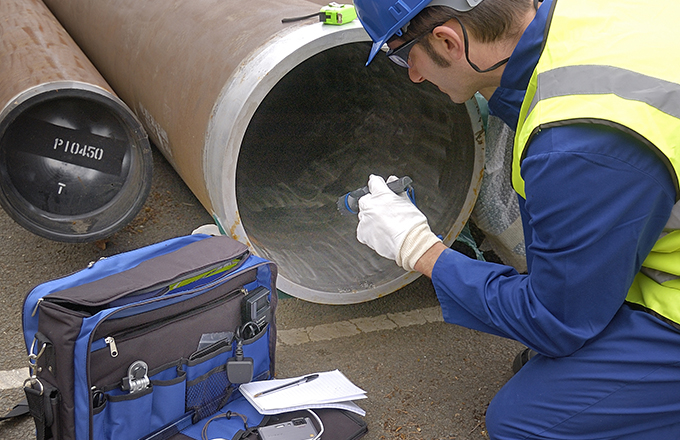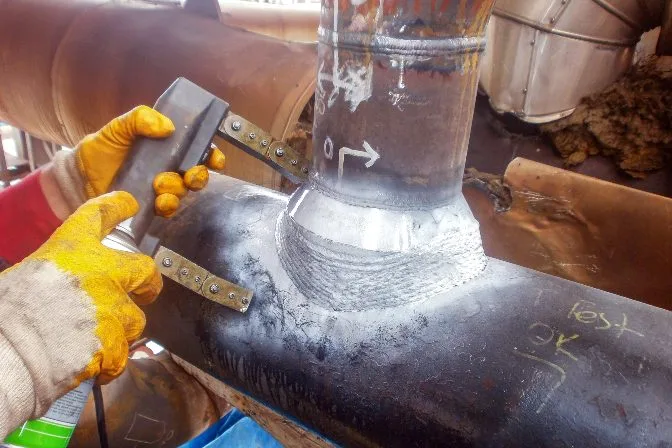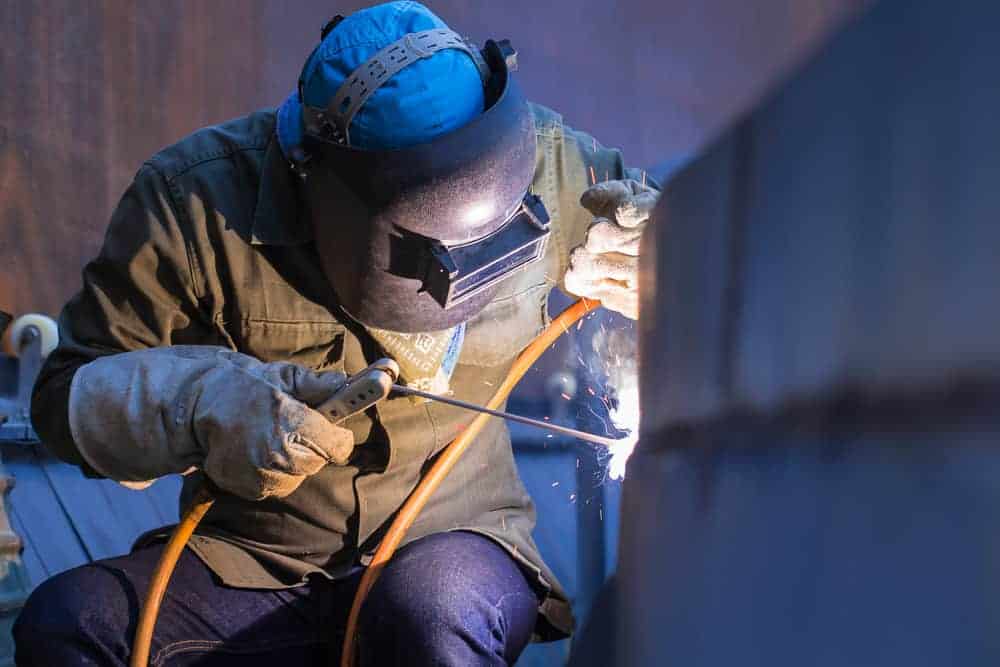Professional Houston Welding Inspection to Meet Industry Regulations
Professional Houston Welding Inspection to Meet Industry Regulations
Blog Article
A Comprehensive Guide to Recognizing How Welding Assessment Functions: Techniques, Requirements, and Best Practices for High Quality Guarantee in Metal Construction
Recognizing the intricacies of welding assessment is crucial for maintaining the stability of steel manufacture. Various methods, such as aesthetic and ultrasonic screening, play a pivotal role in determining possible imperfections, while adherence to established criteria makes sure conformity and durability. Additionally, executing finest techniques can significantly enhance quality assurance steps. The landscape of welding evaluation is not without its difficulties. What problems occur in the field, and just how can these be properly minimized? Discovering these facets exposes the depth of this important discipline.
Value of Welding Assessment
Although welding is a crucial procedure in various markets, its stability directly influences the security and performance of frameworks and parts. Efficient welding evaluation is essential for recognizing problems that can endanger the top quality and resilience of bonded joints. This procedure guarantees adherence to established specs and criteria, which are crucial for preserving structural stability and operational integrity.
Welding assessment offers several purposes, consisting of validating that the welding process has actually been carried out correctly, examining the top quality of materials made use of, and confirming that the finished product satisfies governing and sector criteria (Houston Welding Inspection). With extensive evaluation, possible problems such as porosity, splits, and incomplete blend can be detected early, mitigating and preventing pricey repair work safety dangers
Furthermore, regular welding examinations foster self-confidence amongst stakeholders, consisting of designers, clients, and regulative bodies, by demonstrating a commitment to top quality assurance. The value of welding examination can not be overemphasized; it is indispensable not just for conformity with legal demands but likewise for enhancing the total efficiency of bonded structures. Eventually, a robust welding inspection program is an aggressive action that safeguards versus failings, ensuring the long life and dependability of bonded elements in their desired applications.
Usual Welding Inspection Strategies

Aesthetic assessment is the very first line of protection, permitting assessors to determine surface area problems such as cracks, damages, or insufficient combination. Radiographic screening utilizes X-rays or gamma rays to reveal interior imperfections, making it perfect for complex welds. Ultrasonic testing employs high-frequency sound waves to find subsurface problems, supplying precise measurements of weld integrity.
Magnetic bit testing is effective for ferromagnetic products, highlighting surface and near-surface interruptions when fragments are put on a magnetic area. On the other hand, dye penetrant testing uses a fluid dye to disclose surface-breaking flaws, guaranteeing that even the smallest defects are detected.
Each method has its limitations and staminas, often demanding a mix of approaches for extensive analysis - Houston Welding Inspection. By applying these assessment techniques, quality control in metal fabrication is attained, making certain that bonded frameworks meet security and efficiency criteria
Market Specifications for Welding


The American Welding Society (AWS) and the American National Criteria Institute (ANSI) are 2 prominent organizations that establish welding standards. AWS D1.1, as an example, describes the demands for welding steel structures, while AWS D1.2 focuses on aluminum. Globally, the ISO 3834 typical addresses quality needs for combination welding, giving a structure applicable across national boundaries.

Finest Practices for Quality Control
Quality assurance in welding is paramount to achieving resilient and secure buildings. Establishing a comprehensive high quality administration system (QMS) like this tailored to the specific welding job is vital.
Regular training and accreditation of welding personnel are important for keeping a knowledgeable workforce. Continual education on the latest welding strategies and innovations makes certain that assessors and welders are educated about existing standards and practices.
In addition, conducting pre-weld assessments to examine materials and devices can stop issues prior to Go Here they occur. Houston Welding Inspection. Throughout the welding process, real-time tracking and paperwork of welding criteria assist determine disparities immediately. Post-weld examinations must involve complete examinations making use of non-destructive testing (NDT) approaches to make sure the stability of the welds
Additionally, keeping clear interaction amongst staff member promotes a society of high quality. Regular audits and testimonials of the welding process aid determine locations for improvement. By adhering to these best techniques, companies can attain optimal quality control, ultimately resulting in boosted safety and security and performance in steel construction projects.
Obstacles in Welding Evaluation
Although welding evaluation is important for ensuring architectural integrity, it offers a selection of obstacles that can make complex the assessment process. One substantial obstacle is the irregularity in welding strategies and products used, which can impact the uniformity of weld quality. Various welders may employ differing techniques, resulting in inconsistencies that inspectors demand to identify and review.
One more obstacle entails the discovery of defects. Non-destructive testing (NDT) methods, such as radiographic and ultrasonic screening, can be intricate and call for competent professionals to analyze results accurately. Incorrect positives or downsides can happen, possibly leading to pricey rework or endangered safety.
Furthermore, the existence of ecological factors, such as temperature and humidity, can influence the honesty of welds and the effectiveness of inspection techniques. Inspectors should likewise navigate the governing landscape, guaranteeing conformity with market standards, which can differ by jurisdiction and application.
Conclusion
Finally, welding official source evaluation plays a crucial duty in making certain the integrity and safety of metal manufacture. Employing a range of evaluation strategies, adhering to well established sector requirements, and executing effective top quality management methods collectively improve the integrity of welded structures. Despite the obstacles dealt with in the assessment process, a dedication to continuous renovation and adherence to finest methods can significantly strengthen the quality control structure, fostering higher self-confidence amongst stakeholders in the welding industry.
Effective welding inspection is important for recognizing flaws that could compromise the top quality and longevity of bonded joints.Moreover, constant welding assessments foster self-confidence amongst stakeholders, including engineers, clients, and regulatory bodies, by showing a dedication to quality assurance.The American Welding Society (AWS) and the American National Criteria Institute (ANSI) are two popular companies that develop welding criteria. During the welding process, real-time surveillance and paperwork of welding criteria assist recognize variances instantly. Despite the obstacles faced in the assessment process, a commitment to continual enhancement and adherence to best practices can dramatically strengthen the high quality assurance structure, cultivating higher self-confidence among stakeholders in the welding industry.
Report this page